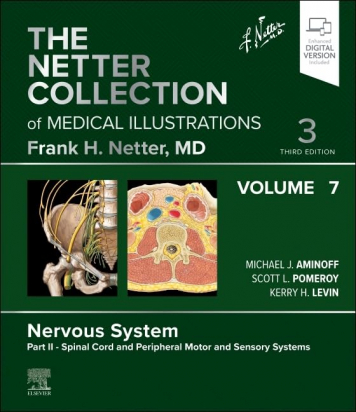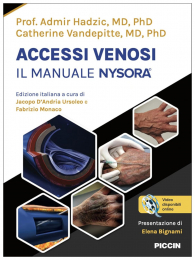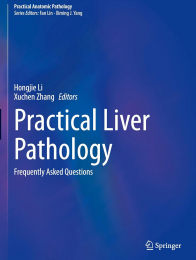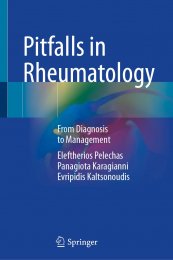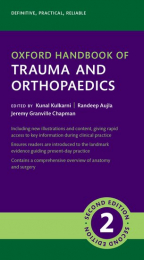Non ci sono recensioni
DA SCONTARE
| Offering a concise, highly visual approach to the basic science and clinical pathology of the nervous system, this updated volume in The Netter Collection of Medical Illustrations (the CIBA "Green Books") contains unparalleled didactic illustrations reflecting the latest medical knowledge. Revised by Drs. Michael J. Aminoff, Scott L. Pomeroy, and Kerry H. Levin, Spinal Cord and Peripheral Motor and Sensory Systems, Part 2 of the Nervous System, Volume 7, integrates core concepts of anatomy, physiology, and other basic sciences with common clinical correlates across health, medical, and surgical disciplines. Classic Netter art, updated and new illustrations, and modern imaging continue to bring medical concepts to life and make this timeless work an essential resource for students, clinicians, and educators. |
| Features: |
|
SECTION 1 CRANIAL NERVE AND NEURO-OPHTHALMOLOGIC DISORDERS
Overview of Cranial Nerves
1.1 Distribution of Motor and Sensory Fibers
1.2 Overview of Cranial Nerves
1.3 Nerves and Nuclei Viewed in Phantom From Behind
1.4 Nerves and Nuclei in Lateral Dissection
Cranial Nerve I: Olfactory Nerve
1.5 Olfactory Pathways
1.6 Olfactory Receptors
1.7 Olfactory Bulb and Nerve
Cranial Nerve II: Optic Nerve
1.8 Eye
1.9 Cranial Nerve II and Visual Pathways
1.10 Optic Nerve Appearance
1.11 Retinal Projections to Thalamus, Midbrain, and Brainstem
1.12 Pupillary Light Reflex and the Accommodation Reflex
Cranial Nerves III, IV, and VI (Oculomotor, Trochlear, and Abducens)
1.13 Oculomotor (III), Trochlear (IV), and Abducens Nerves (VI)
1.14 Nerves of Orbit and Cavernous Sinus
1.15 Damage to Cranial Nerve III
1.16 Control of Eye Movements
1.17 Control of Eye Movements: Pathology
1.18 Control of Eye Movements: Pathology (Continued)
1.19 Autonomic Innervation of the Eye
Cranial Nerve V: Trigeminal Nerve
1.20 Trigeminal Nerve (V)
1.21 Trigeminal Nuclei: Afferent and Central Connections
1.22 Trigeminal Nuclei: Central and Peripheral Connections
1.23 Ophthalmic (V1) and Maxillary (V2) Nerves
1.24 Mandibular Nerve (V3)
1.25 Trigeminal Nerve Disorders
Cranial Nerve VII: Facial Nerve
1.26 Pons: Level of the Genu of the Facial Nerve
1.27 Facial Nerve (VII)
1.28 Muscles of Facial Expression: Lateral View
1.29 Central Versus Peripheral Facial Paralysis
1.30 Facial Palsy
Taste Receptors and Pathways
1.31 Anatomy of Taste Buds and Their Receptors
1.32 Tongue
Cranial Nerve VIII: Vestibulocochlear Nerve
1.33 Vestibulocochlear Nerve (VIII)
1.34 Pathway of Sound Reception
1.35 Pathologic Causes of Vertigo
1.36 Canalith Repositioning (Epley Maneuver)
1.37 Afferent Auditory Pathways
1.38 Centrifugal Auditory Pathways
1.39 Vestibular Receptors
1.40 Cochlear Receptors
Cranial Nerve IX: Glossopharyngeal Nerve and Otic Ganglion
1.41 Glossopharyngeal Nerve (IX)
1.42 Otic Ganglion
Cranial Nerve X: Vagus Nerve
1.43 Vagus Nerve (X)
1.44 Motor and Sensory Branches From the Vagus Nerve
1.45 Neurogenic Disorders of Mouth and Pharynx (X and XII)
Cranial Nerve XI: Accessory Nerve
1.46 Accessory Nerve (XI)
1.47 Clinical Findings in Cranial Nerve XI Damage
Cranial Nerve XII: Hypoglossal Nerve
1.48 Hypoglossal Nerve Intermedullary Course
1.49 Hypoglossal Nerve (XII)
1.50 Disorders of Hypoglossal Nucleus and Nerve
SECTION 2 SPINAL CORD: ANATOMY AND MYELOPATHIES
2.1 Spinal Cord
2.2 Spinal Membranes and Nerve Roots
2.3 Arteries of Spinal Cord and Nerve Roots
2.4 Arteries of Spinal Cord: Intrinsic Distribution
2.5 Veins of Spinal Cord, Nerve Roots, and Vertebrae
2.6 Principal Fiber Tracts of Spinal Cord
2.7 Somesthetic System of Body
2.8 Corticospinal (Pyramidal) System: Motor Component
2.9 Rubrospinal Tract
2.10 Vestibulospinal Tracts
2.11 Reticulospinal and Corticoreticular Pathways
2.12 Spinal Origin or Termination of Major Descending Tracts and Ascending Pathways
2.13 Cytoarchitecture of Spinal Cord Gray Matter
2.14 Spinal Effector Mechanisms
2.15 Spinal Reflex Pathways
2.16 Spinal Cord Dysfunction
2.17 Sensory Impairment Related to Level of Spinal Cord Injury
2.18 Incomplete Spinal Cord Syndromes
2.19 Acute Spinal Cord Syndromes
2.20 Acute Spinal Cord Syndromes: Pathology, Etiology, and Diagnosis
2.21 Spinal Tumors
2.22 Extramedullary and Intramedullary Spinal Cord Tumors
2.23 Neuroimaging (MRI) Characteristics of Spinal Tumors
2.24 Syringomyelia
2.25 Subacute Combined Degeneration
2.26 Spinal Dural Fistulas and Arteriovenous Malformations
2.27 Cervical Spondylosis
2.28 Cervical Disk Herniation Causing Cord Compression
2.29 Infectious and Hereditary Myelopathies
SECTION 3 SPINAL TRAUMA
3.1 Spinal Column
3.2 Atlas and Axis
3.3 Cervical Vertebrae
3.4 External Craniocervical Ligaments
3.5 Internal Craniocervical Ligaments
3.6 Thoracic Vertebrae
3.7 Lumbar Vertebrae and Intervertebral Disk
3.8 Sacrum and Coccyx
3.9 Ligaments of Sacrum and Coccyx
3.10 Biomechanics of Spine and Spinal Cord Injuries: Distractive Flexion
3.11 Biomechanics of Spine and Spinal Cord Injuries: Compressive Flexion
3.12 Biomechanics of Spine and Spinal Cord Injuries: Distractive Extension
3.13 Cervical Spine Injury: Prehospital, Emergency Department, and Acute Management
3.14 Traction and Bracing
3.15 Anterior Cervical Spine Decompression and Stabilization
3.16 Posterior Cervical Stabilization and Fusion
3.17 Spinal Cord Injury Medical Issues
SECTION 4 NERVE ROOTS AND PLEXUS DISORDERS
4.1 Cervical Disk Herniation
4.2 Radiographic Diagnosis of Radiculopathy
4.3 Back Pain and Lumbar Disk Disease
4.4 Lumbar Disk Herniation: Clinical Manifestations
4.5 L4–5 Disk Extrusion
4.6 Lumbosacral Spinal Stenosis
4.7 Spinal Nerves
4.8 Dermal Segmentation
4.9 Thoracic Nerves
4.10 Thoracic Spinal Nerve Root Disorders
4.11 Diabetic Lumbosacral Radiculoplexus Neuropathy
4.12 Lumbar, Sacral, and Coccygeal Plexuses
4.13 Brachial Plexus
4.14 Brachial Plexus and Cervical Nerve Root Injuries at Birth
4.15 Brachial Plexopathy
4.16 Lumbosacral Plexopathy
4.17 Cervical Plexus
SECTION 5 MONONEUROPATHIES
5.1 Compression Neuropathies
5.2 Chronic Nerve Compression
5.3 Evaluation of Mononeuropathies
5.4 Radiologic Studies in Compression Neuropathy
5.5 Proximal Nerves of the Upper Extremity
5.6 Suprascapular and Musculocutaneous Nerves
5.7 Median Nerve
5.8 Proximal Median Neuropathies
5.9 Distal Median Neuropathies: Carpal Tunnel Syndrome
5.10 Distal Median Neuropathies: Carpal Tunnel Syndrome (Continued)
5.11 Ulnar Nerve
5.12 Ulnar Mononeuropathies: Potential Entrapment Sites
5.13 Radial Nerve
5.14 Radial Nerve Compression and Entrapment Neuropathies
5.15 Femoral and Lateral Femoral Cutaneous Nerves
5.16 Iliohypogastric, Ilioinguinal, Genitofemoral, and Obturator Nerves
5.17 Sciatic and Gluteal Nerves
5.18 Sciatic and Posterior Femoral Cutaneous Nerves
5.19 Fibular (Peroneal) and Tibial Nerves
5.20 Peroneal Nerve Compression
5.21 Tibial Nerve
5.22 Dermatomal and Cutaneous Nerve Patterns
5.23 Dermatomes
SECTION 6 PERIPHERAL NEUROPATHIES
6.1 Peripheral Nerve
6.2 Histology of Peripheral Nerve
6.3 Cell Types of Nervous System
6.4 Resting Membrane Potential
6.5 Ion Channel Mechanics and Action Potential Generation
6.6 Neurophysiology and Peripheral Nerve Demyelination
6.7 Impulse Propagation
6.8 Conduction Velocity
6.9 Visceral Efferent Endings
6.10 Cutaneous Receptors
6.11 Pacinian Corpuscle
6.12 Muscle and Joint Receptors
6.13 Proprioceptive Reflex Control of Muscle Tension
6.14 Charcot-Marie-Tooth Disease Overview (Hereditary Motor and Sensory Neuropathy)
6.15 Charcot-Marie-Tooth Disease: Common Types
6.16 Early Onset and Other Rare Forms of Charcot-Marie-Tooth Disease and Inherited Neuropathies
6.17 Hereditary Sensory and Autonomic Neuropathy
6.18 Guillain-Barré Syndrome
6.19 Guillain-Barré Syndrome (Continued)
6.20 Chronic Inflammatory Demyelinating Polyradiculoneuropathy
6.21 Diabetic Neuropathies
6.22 Monoclonal Protein–Associated Neuropathies
6.23 Distal Acquired Demyelinating Symmetric (DADS) Neuropathy
6.24 Vasculitic Neuropathy and Other Connective Tissue Disorders Associated With Neuropathy
6.25 Sjögren Syndrome
6.26 Immunopathogenesis of Guillain-Barré Syndrome
6.27 Peripheral Neuropathy Caused by Heavy Metal Poisoning
6.28 Metabolic, Toxic, and Nutritional Peripheral Neuropathies
6.29 Leprosy and Other Infections Sometimes Causing Peripheral Neuropathy
SECTION 7 AUTONOMIC NERVOUS SYSTEM AND ITS DISORDERS
7.1 General Topography of Autonomic Nervous System
7.2 General Topography of Autonomic Nervous System (Continued)
7.3 Autonomic Reflex Pathways
7.4 Cholinergic and Adrenergic Nerves
7.5 Autonomic Nerves in Head and Neck
7.6 Autonomic Nerves in Neck
7.7 Autonomic Innervation of Eye
7.8 Autonomic Innervation of Eye (Continued)
7.9 Autonomic Nerves in Thorax
7.10 Innervation of Heart
7.11 Innervation of Blood Vessels
7.12 Carotid Body and Carotid Sinus
7.13 Autonomic Nerves and Ganglia in Abdomen
7.14 Innervation of Stomach and Proximal Duodenum
7.15 Innervation of Intestines
7.16 Autonomic Innervation of Small Intestine
7.17 Enteric Plexuses
7.18 Innervation of Liver and Biliary Tract
7.19 Innervation of Adrenal Glands
7.20 Autonomic Nerves and Ganglia in Pelvis
7.21 Innervation of Kidneys, Ureters, and Urinary Bladder
7.22 Innervation of Urinary Bladder and Lower Ureter
7.23 Innervation of Reproductive Organs
7.24 Female Reproductive Organs
7.25 Autonomic Testing
7.26 Cardiovagal Testing and Head-up Tilting
7.27 Abnormal Pupillary Conditions
7.28 Clinical Presentation of Autonomic Disorders
7.29 Multiple System Atrophy
SECTION 8 PAIN
8.1 Neuroanatomy of the Ascending Pain Pathways
8.2 Neuroanatomy of the Ascending Pain Pathways (Continued)
8.3 Descending Nociceptive Pathways and Neurochemical Foundations of Descending Pain Modulation
8.4 Endorphin System
8.5 Nociceptive Processing and Central Nervous System Correlates of Pain
8.6 Central Nervous System Neurotransmitters, Receptors, and Drug Targets
8.7 Thalamic Pain Syndrome
8.8 Clinical Manifestations Related to Thalamus Site in Intracerebral Hemorrhage
8.9 Complex Regional Pain
8.10 Herpes Zoster
8.11 Occipital Neuralgia
8.12 Myofascial Factors in Low Back Pain
8.13 Posterior Abdominal Wall: Internal View
8.14 Lumbar Zygapophyseal Joint Back Pain
8.15 Low Back Pain and Effects of Lumbar Hyperlordosis and Flexion on Spinal Nerves
8.16 Examination of the Patient With Low Back Pain
8.17 Osteoporosis
8.18 Diagnosis of Low Back, Buttock, and Hip Pain
8.19 Hip Joint Involvement in Osteoarthritis
8.20 Painful Peripheral Neuropathy
8.21 Peripheral Neuropathies: Clinical Manifestations
8.22 Functional Neurologic Disorders
8.23 Somatoform Conversion Reactions
SECTION 9 FLOPPY INFANT
9.1 Neonatal Hypotonia
9.2 Congenital Myopathies
9.3 Spinal Muscular Atrophy
9.4 Treatment for Spinal Muscular Atrophy
9.5 Infantile Neuromuscular Junction Disorders
9.6 Arthrogryposis Multiplex Congenita
SECTION 10 MOTOR NEURON AND ITS DISORDERS
10.1 Peripheral Nervous System: Overview
10.2 Spinal Cord and Neuronal Cell Body With Motor, Sensory, and Autonomic Components of the Peripheral Nerve
10.3 Motor Unit
10.4 Motor Unit Potentials
10.5 Primary Motor Neuron Disease
10.6 Amyotrophic Lateral Sclerosis
10.7 Clinical Manifestations of Amyotrophic Lateral Sclerosis (Continued)
10.8 Mimics of Amyotrophic Lateral Sclerosis
10.9 Diagnosis of Amyotrophic Lateral Sclerosis
10.10 Treatment of Amyotrophic Lateral Sclerosis
10.11 Spinal Muscular Atrophy and Spinal Bulbar Muscular Atrophy
SECTION 11 NEUROMUSCULAR JUNCTION AND ITS DISORDERS
11.1 Neuromuscular Junction
11.2 Physiology of Neuromuscular Junction
11.3 Synaptic Transmission
11.4 Synaptic Transmission (Continued)
11.5 Repetitive Motor Nerve Stimulation
11.6 Patient With Lambert-Eaton Myasthenic Syndrome
11.7 Myasthenia Gravis
11.8 Myasthenia Gravis (Continued)
11.9 Immunopathology of Myasthenia Gravis
11.10 Presynaptic Neuromuscular Junction Transmission Disorders: Lambert-Eaton Myasthenic Syndrome and Infantile Botulism
11.11 Congenital Myasthenic Syndromes
11.12 Foodborne Neurotoxins
SECTION 12 MUSCLE AND ITS DISORDERS
12.1 Muscle Fiber Anatomy: Basic Sarcomere Subdivisions
12.2 Muscle Fiber Anatomy: Biochemical Mechanics of Contraction
12.3 Muscle Membrane, T Tubules, and Sarcoplasmic Reticulum
12.4 Muscle Response to Nerve Stimulation
12.5 Metabolism of Muscle Cell
12.6 Muscle Fiber Types
12.7 Overview of Myopathies: Clinical Approach
12.8 Dystrophinopathies
12.9 Duchenne Muscular Dystrophy
12.10 Dystrophinopathies (Continued)
12.11 Myotonic Dystrophy and Other Myotonic Disorders
12.12 Myotonic Dystrophy and Other Myotonic Disorders (Continued)
12.13 Other Types of Muscular Dystrophy
12.14 Polymyositis and Dermatomyositis
12.15 Polymyositis and Dermatomyositis (Continued)
12.16 Inclusion Body Myositis
12.17 Immunopathogenesis of Inflammatory Myopathies
12.18 Endocrine, Toxic, and Critical Illness Myopathies
12.19 Myopathies: Hypokalemia/Hyperkalemia and Periodic Paralyses Channelopathies
12.20 Metabolic and Mitochondrial Myopathies
12.21 Myoglobinuric Syndromes Including Malignant Hyperthermia
Selected References
Index

